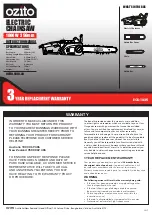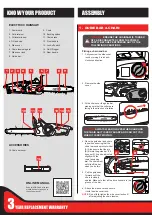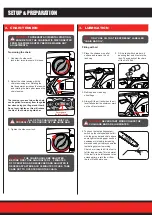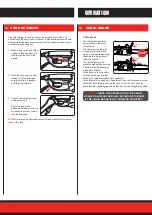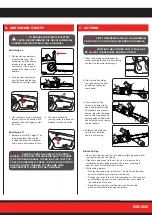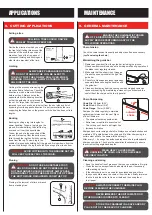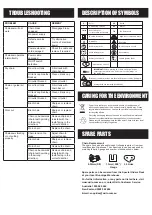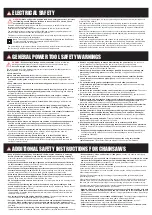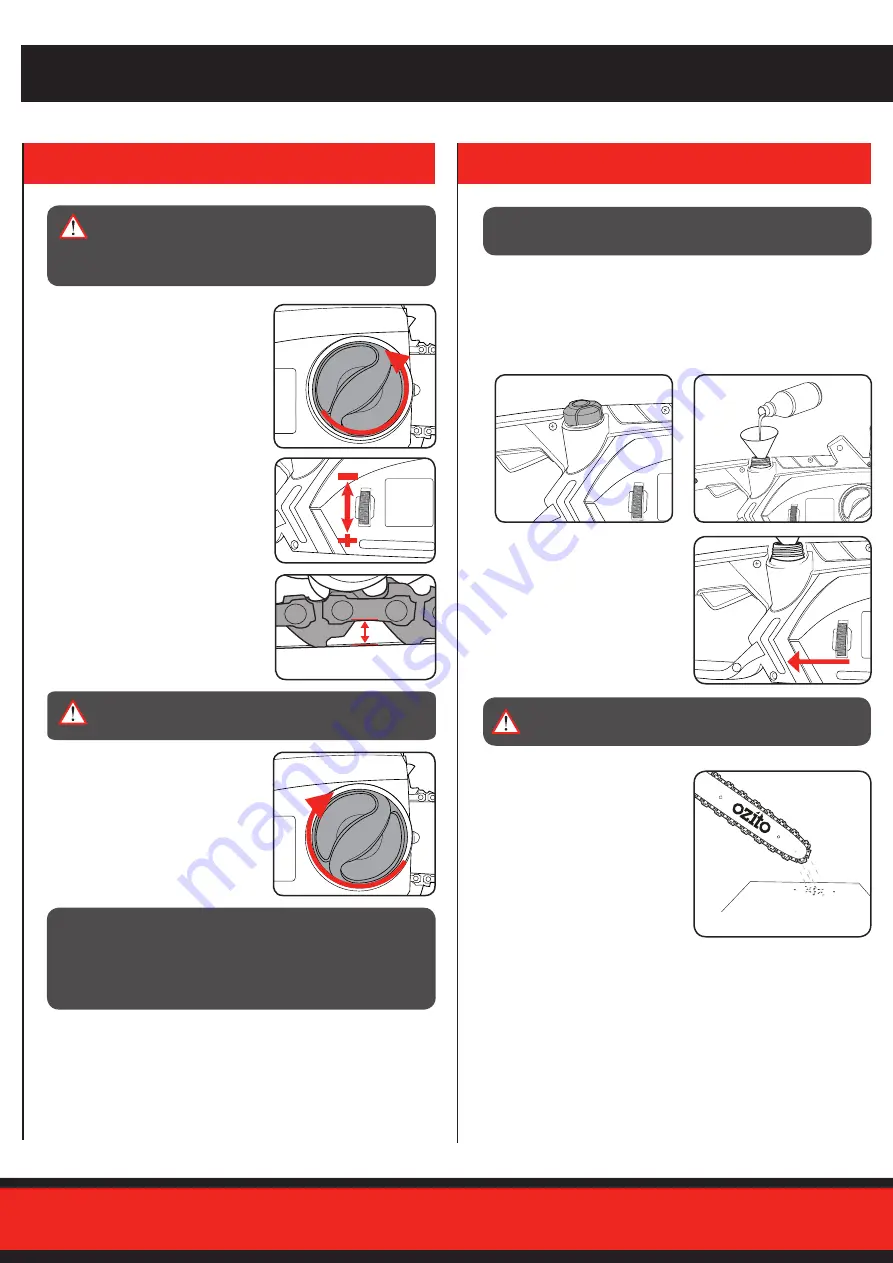
+
Tensioning the chain
1. Unscrew the side cover
lock a few turns to ensure it is loose.
2. Adjust the chain tension with the
chain tensioning dial. Rotating the
dial downwards increases the tension
and rotating the dial up decreases the
chain tension.
The tension is correct when the chain
can be pulled 3mm away from the guide
bar when using your finger and thumb.
Do not over-tighten as this will reduce
the life of the chain and guide bar.
3. Tighten the side cover lock.
3. LUBRICATION
2. CHAIN TENSION
SETUP & PREPARATION
3mm gap is
the ideal tension
+
+
IMPORTANT!
THE CHAIN SHOULD BE ADJUSTED
BEFORE FIRST USE, AGAIN AFTER 2
–
3 MINUTES
OF OPERATION AND RECHECKED AND ADJUSTED IF
NECESSARY AFTER EACH 30 MINUTES OF USE. TAKE
CARE NOT TO OVER TENSION THE CHAIN.
NOTE:
ONLY USE OIL THAT IS EXPRESSLY LABELLED
“CHAIN BAR OIL”.
Filling with oil
1. Place the chainsaw on a flat
surface and remove the oil
tank cap.
3. Refit cap and clean any
oil spillage.
4. Always fill the oil tank when the oil
level falls below the minimum mark
on the oil level window.
5. To check the lubricating system,
switch on the chainsaw and hold it
with the guide bar and chain above
some light coloured paper such as
newspaper. A steadily increasing
stain caused by oil spray shows the
lubricating system is working.
Chain bar oil may leak if the tool is
left for long periods. This is normal.
If the tool is to be left unused for an
extended time, drain the oil from
the tool. Refill before use.
2. Fill the tank with chain bar oil,
ensuring that no dirt enters the
tank. The capacity of the chain
oil tank is 160ml.
WARNING!
TO PREVENT ACCIDENTAL STARTING,
ENSURE THAT THE CHAINSAW IS DISCONNECTED
FROM THE POWER SUPPLY BEFORE MAKING ANY
ADJUSTMENTS.
WARNING!
ALL OF THE CHAIN LINKS MUST LIE
PROPERLY IN THE GROOVE OF THE GUIDE BAR.
WARNING!
NEVER START WORK UNLESS THE
CHAIN AND BAR ARE LUBRICATED.

